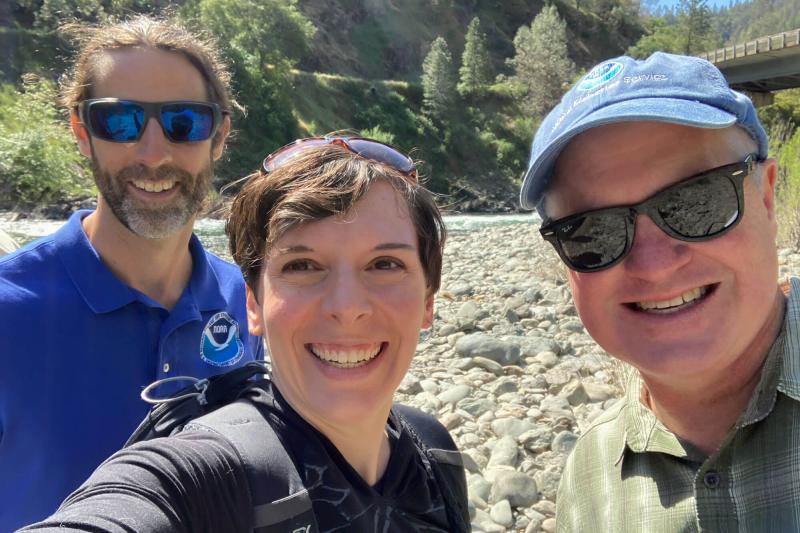What’s it like to work every day to save a species? NOAA Fisheries is working to recover five West Coast Species in the Spotlight. They are among nine species nationally that NOAA Fisheries has identified as facing a high risk of extinction, and where concerted recovery actions can make the difference.
Many of the species once had great economic and ecological value as part of the marine ecosystem. Sacramento River winter-run Chinook salmon once provided food and spiritual significance for California tribes such as the Winnemem Wintu.
Brian Ellrot, NOAA Fisheries’ Sacramento River Winter-Run Chinook Salmon Recovery Coordinator, shares with us why Sacramento River Winter-Run Chinook Salmon are worth saving, his proudest achievements to date, and where more work is needed.
What’s one thing you want people to know about Sacramento River Winter-Run Chinook salmon?
Winter-run Chinook salmon occur nowhere in the world other than in the Sacramento River system. They need our help. They’re the only Chinook salmon species that migrates upstream as adults during the wintertime, and then spawns in the summertime when air temperatures are at their hottest. These fish evolved to spawn during the summer because they historically had access to high elevation rivers fed by snowmelt and cold water springs from Mount Shasta. In 1945, the construction of Shasta Dam blocked winter-run Chinook salmon from returning to their historical spawning grounds in the southern Cascade Mountains in the headwaters of the Sacramento, McCloud, and Pit Rivers. The way to save this species is to reintroduce them to their ancestral habitats.
Why is the species important to protect and recover?
First and foremost, recovering winter-run Chinook salmon will ensure that wild salmon remain a key piece of California’s natural heritage for our future and our children’s future. Their recovery also will help support productive ocean salmon fisheries, which are estimated at $200 million to nearly $2 billion annually. It will provide greater flexibility in making water available for the 25 million people that get their water from Central Valley water projects as well as the $45 billion California agriculture industry.
What are you most proud of?
I’m honored to have helped the Winnemem Wintu Tribe and the California Department of Fish and Wildlife return winter-run Chinook salmon to their ancestral home in the McCloud River for the first time in more than 80 years. The year 2022 will go down as a historic year in the recovery of winter-run Chinook salmon and I am proud to have been a part of it.
Where do we have more work to do?
Winter-run Chinook salmon are one of the most vulnerable runs of Pacific salmon to climate change along the West Coast. While there is currently support for short-term pilot actions to reintroduce winter-run Chinook salmon to climate change resistant spawning and rearing habitats in the McCloud River, commitment to a long-term program is needed. Expanding access to floodplain habitats for juvenile rearing will be a key part of recovering winter-run Chinook salmon. We have strong partnerships and once-in-a-lifetime restoration funding opportunities at the federal and state levels. I’m hopeful we can make a difference for winter-run Chinook salmon in the years ahead.
Species in the Spotlight
We know we can’t do this alone. A major component of the Species in the Spotlight initiative is to expand partnerships and motivate individuals to work with us to get these species on the road to recovery.
We developed a Species in the Spotlight 2021–2025 Priority Action Plan. The plan lists key actions NOAA Fisheries and its partners can take from 2021 to 2025 to help recover the species. These actions include:
- Improve management of Shasta Reservoir cold water storage
- Restore and reintroduce winter-run Chinook to Battle Creek habitat
- Reintroduce winter-run Chinook salmon into historical habitats above Shasta Dam
- Improve Yolo Bypass fish habitat and passage
- Manage winter and early spring delta conditions to improve juvenile survival
- Collaborative science and fostering partnerships





